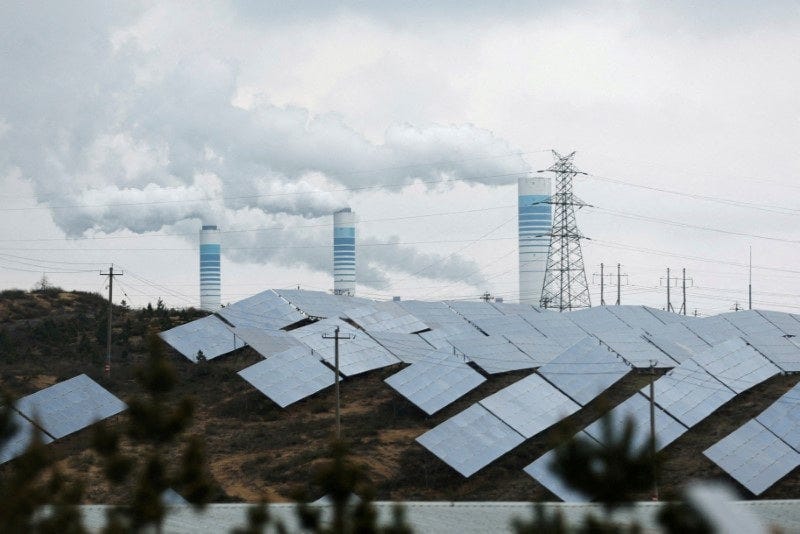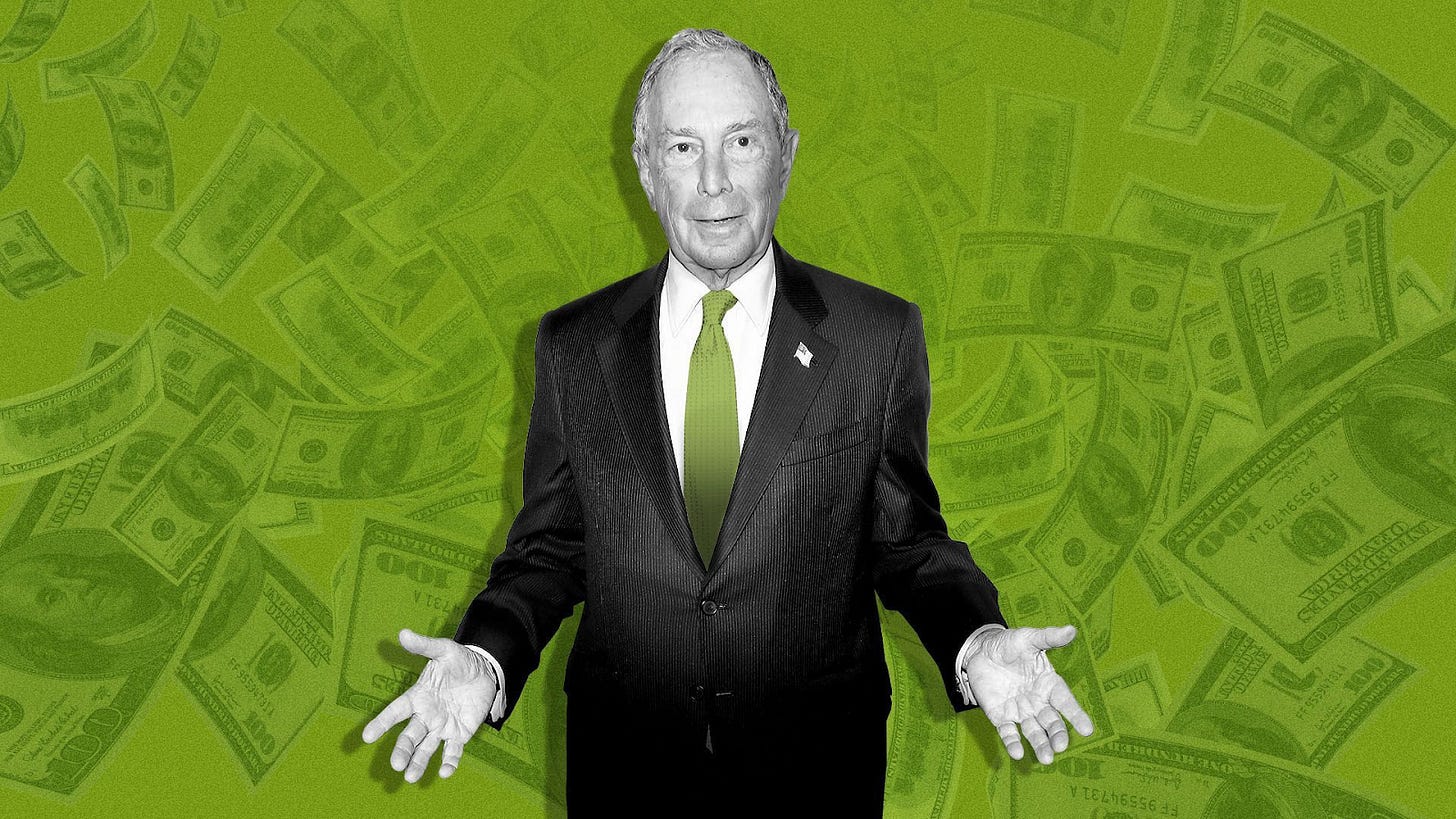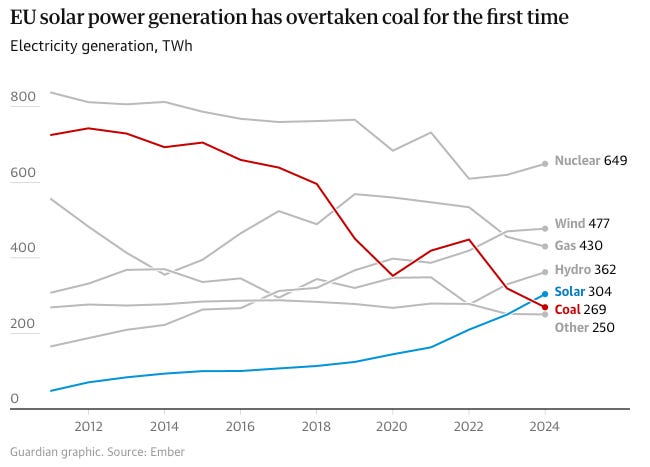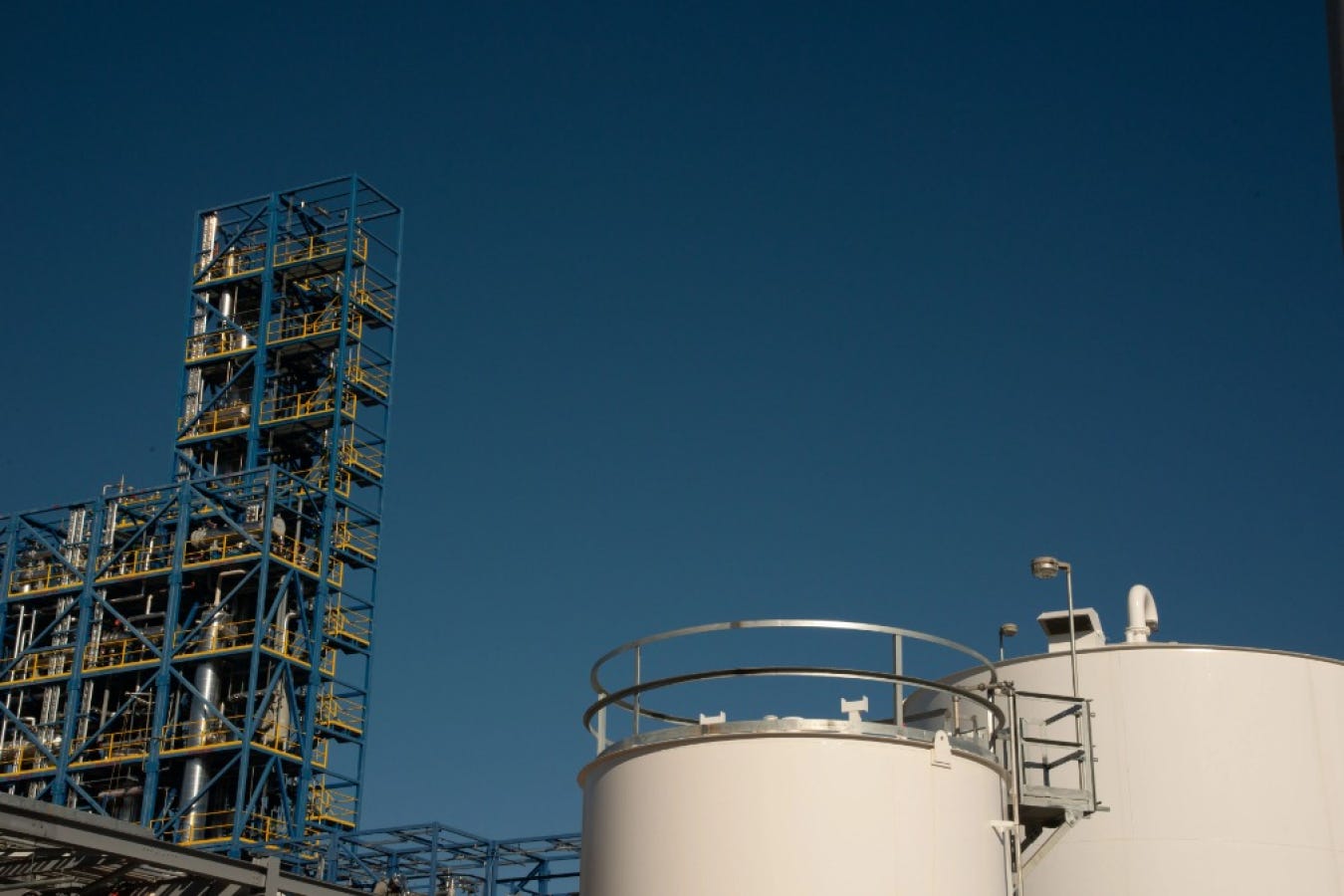Friday Five: Philanthropy stepping in, Solar is winning, Money is still flowing, Renewables are winning, SAF takes off
Good climate solutions news.
Welcome to Climate Drift - the place where we dive into climate solutions and help you find your role in the race to net zero.
If you haven’t subscribed, join here:
Hey there 👋
Skander here.
I think we could all use some good climate news after this week, and I have the goods, from SAF progress to money unlocks. And as always renewables are winning.
Don’t let the noise overwhelm you: stay focused on the impact you’re making and keep pushing forward.
In case you haven’t had a chance yet, our 160-slide Climate Recap 2024 dives into the big questions of last year and the year ahead. It covers the impact of climate change, major narratives like AI’s energy footprint and China’s dominance, and what’s coming in 2025, including emerging trends, political roadblocks, and new opportunities.
Check it out here:
🌊 Let’s dive in
The 4th cohort of our accelerator is starting mid February and applications are still open (and a few spots are left). We are already interviewing and selecting participants, so apply now and make an impact:
🚀 Apply today: Be part of the solution
Michael Bloomberg steps in to help fund UN climate body after Trump withdrawal
When governments step back, others need to step forward. Michael Bloomberg’s pledge to fund the UN climate body, covering the U.S.’s $7.4 million annual contribution plus arrears, underscores the growing role of philanthropy in addressing global challenges. To put it in perspective, $7.4 million is a rounding error in the tech world, where startups routinely raise multiples of that in a single funding round.
This isn’t the first time Bloomberg Philanthropies has stepped in- during Trump’s first term, when the U.S. pulled out of the Paris Agreement, the organization spent around $21 million to support the UN climate office and related activities between 2017 and 2021.
The uncomfortable reality is that critical climate efforts increasingly rely on private funding to bridge gaps left by political decisions.
EU made more electricity from solar than coal in 2024
Europe’s clean energy transition reached a key milestone in 2024, as solar power overtook coal in electricity generation for the first time—11% versus 10%, respectively, according to a report from climate think tank Ember. This shift comes amid a 68% decline in coal use since its 2003 peak, with countries like Germany and Poland, historically coal-reliant, making significant transitions to renewables.
DOE finalizes $9.8B in financing for Rivian, Plug Power, Sunwealth, and Ioneer
The Biden administration's Loan Programs Office (LPO) raced to get money out the door ahead of Donald Trump’s inauguration, finalizing $9.8 billion in clean energy loans for companies like Rivian, Plug Power, Sunwealth, and Ioneer. These funds aim to de-risk ambitious projects, such as EV factories, hydrogen facilities, and lithium mining, that often struggle to secure private financing.
This is the challenge of climate finance right now: getting the money out of the door fast enough to fund the future, but in a way that survives political whiplash. While the LPO’s sprint is a bold attempt to lay groundwork for the next generation of clean technology, its future, and the projects it supports, hangs in the balance of a deeply… complicated political landscape.

China's solar, wind power installations soared to record in 2024
China smashed its own records for clean energy growth in 2024, cementing its spot as the global leader in renewables. Solar capacity jumped 45% to a massive 886 GW—hitting its 2030 target six years early—while wind power climbed 18%. Analysts even think renewables could cover all of China’s new power demand by 2025, potentially peaking emissions from its power sector way ahead of schedule.
Coal’s still a big player on China’s grid, but the sheer speed of this clean energy rollout is staggering. Compared to the political gridlock and uncertainty in the U.S., China’s approach shows how focused policy, big investments, and long-term goals can seriously move the needle on decarbonization—even in the world’s biggest energy consumer.
First Ethanol Alcohol-to-Jet Sustainable Aviation Fuel Production Facility Unveiled
The unveiling of the LanzaJet’s Freedom Pines Fuels facility in Georgia marks a significant milestone in sustainable aviation fuel (SAF) production, as it becomes the world’s first ethanol-based alcohol-to-jet SAF commercial plant. Supported by the Department of Energy’s Bioenergy Technologies Office (BETO), the facility is expected to produce 9 million gallons of SAF annually.
Dive deeper into SAF in Jonathan’s overview:
The Sustainable Aviation Fuel (SAF) Solution Framework
Welcome to Climate Drift - the place where we explain climate solutions and help you find your role in the race to net zero.










